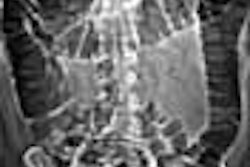Dear AuntMinnie Member,
Could there be a way to determine in advance which breast screening patients who have received biopsies might be at risk for misdiagnosis? Maybe, if a software program developed at Stanford University pans out.Dear AuntMinnie Member,
Could there be a way to determine in advance which breast screening patients who have received biopsies might be at risk for misdiagnosis? Maybe, if a software program developed at Stanford University pans out.
While the vast majority of breast biopsies turn out to be accurate, a small percentage generate false negatives due to errors such as incorrect needle positioning. Many of these errors can be caught if the mammography findings are correlated with a database of pathology results, according to an article by staff writer Tracie L. Thompson, featured in our Women’s Imaging Digital Community.
The Stanford researchers developed a computer program that performs this correlation automatically, flagging the biopsy results that appeared suspicious. Did it work? Find out by visiting the community, at http://womens.auntminnie.com.
In other news, check out a late-breaking story on collaboration discussions between two of radiology’s largest academic societies, the American College of Radiology and the American Roentgen Ray Society. The societies say that the discussions could potentially lead to a merger of the organizations. Read all about it here.



















